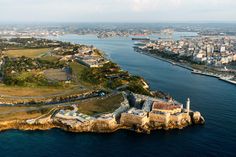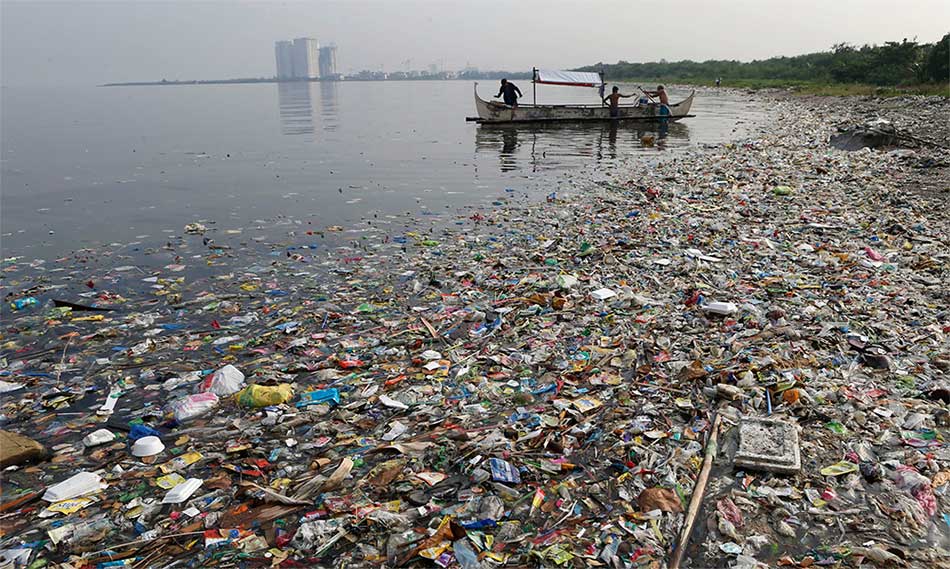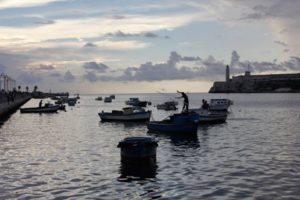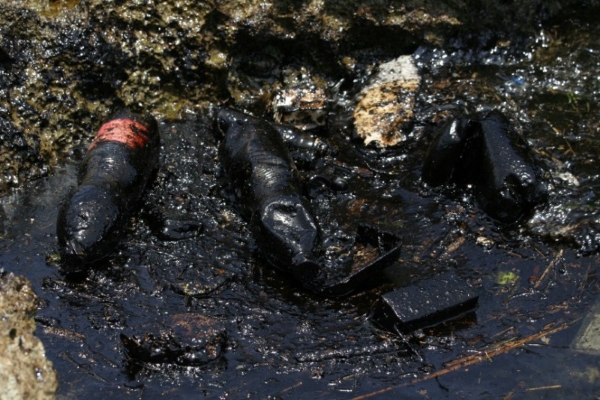The Bay of Havana is considered one of the safest bays in the Caribbean and America. It has a bag shape, with a narrow and deep entrance channel. It is navigable only in 120 meters; it has 87 percent of the occupied territory, and 63 percent of the productive sector has 71 berths and 50 docks. In the bay sits the Port of Havana, which is the main port of Cuba.
The bay is considered one of the most polluted in the world, because it is going take a lot of waste from the city. Currently, several environmental recovery projects are being carried out for the Havana Bay, including solid waste collection, dredging, the construction of a waste treatment plant in the Luyanó River and the use of bacteria specialized in decomposition. of oil, one of the most important pollutants.
In order to return the bay to a low volume of waste and abuses of the current Cuban environment, an organization called the Bahia Habana State Working Group (GTE-BH) has been created in Havana, which seeks to “promote an environmental culture participatory in the population, “as well as adding more people to the work of preserving the environment and especially the Havana roadstead.
Created in 1998, the GTE-BH promotes the conservation of Havana Bay, a site cataloged by specialists of high level of pollution for many years. Last year, the state group organized a similar festival that drew attention to the care of the eastern area, which includes the towns of Regla, Guanabacoa, Habana del Este, Arroyo Naranjo and San Miguel del Padrón.
The sanitation work carried out so far in the bay concentrates on the collection of solids, but it is not enough, experts have warned. In April of last year the official newspaper Granma reported that the Government had begun to use innovative plastic barriers to stop the arrival of waste, with a view to cleaning the roadstead in the eyes of the growing cruise tourism that arrives at the port of Havana.
According to GTE-BH sources, “a reduction of 70% of the pollutant load is estimated” in the waters of the Havana rada.
However, the measures are not enough. Last April, the same GTE-BH officials warned that despite discreet advances, pollution indicators have remained stagnant for two years, so more drastic measures and investments are urgently needed, including treatment systems to improve the quality of the waters that are poured into the Havana rada.
In Cuba, the main source of pollution comes from the dumping of untreated and inadequately treated waste or emissions into water bodies. Also of the deficient handling of dangerous wastes and toxic chemical products.
According to authorities, technological obsolescence, the lack of systems for the treatment of emissions and monitoring capabilities, the lack of sewerage, the lack of knowledge of what is established by regulations and technical standards, the lack of responsibility and the lack of maintenance of systems contribute to environmental deterioration.
GOBIERNO CUBANO HACE ESFUERZOS POR LIMPIAR LA GIGANTESCA CONTAMINACION DE LA BAHIA HABANERA.
La Bahía de la Habana es considerada como una de las bahías más seguras del Caribe y de América. Tiene forma de bolsa, con un canal de entrada estrecho y profundo. Es navegable solo en 120 metros; tiene el 87 por ciento del territorio ocupado, y el 63 por ciento de sector productivo cuenta con 71 atraques y 50 muelles. Por otra parte, desde hace más de 30 años el calado de los buques oscila entre los nueve y los 11 metros.
En la bahía se asienta el Puerto de La Habana, el cual es el principal puerto de Cuba.
La bahía es considerada una de las más contaminadas del mundo, debido a que a ella van a parar gran cantidad de desechos de la ciudad. En la actualidad se llevan a cabo varios proyectos de recuperación ambiental para la bahía de La Habana, que incluyen recogida de desechos sólidos, dragado, la construcción de una planta de tratamiento de residuales en el río Luyanó y el uso de bacterias especializadas en la descomposición del petróleo, uno de los más importantes contaminantes.
A tal efecto de regresar la bahia a un bajo volumen de desperdicios y abusos del medio ambiente cubano actual se ha creado en la Habana una organizacion llamado el Grupo de Trabajo Estatal Bahía Habana (GTE-BH), que busca de “promover una cultura ambiental participativa en la población”, así como sumar más personas a la labor de preservar el medio ambiente y en especial de la rada habanera.
Creado en 1998, el GTE-BH promueve la conservación de la bahía habanera, un sitio catalogado por especialistas de alto grado de contaminación desde hace ya bastantes anos. El pasado año, el grupo estatal organizó un festival similar que llamó la atención sobre el cuidado de la zona este, que incluye las localidades de Regla, Guanabacoa, Habana del Este, Arroyo Naranjo y San Miguel del Padrón.
Las labores de saneamiento realizadas hasta ahora en la bahía se concentran en la recogida de sólidos, pero no es suficiente, según han alertado los expertos. En abril del pasado año el diario oficial Granma informó que el Gobierno había comenzado a usar novedosas barreras de plástico para detener la llegada de residuos, con vistas a limpiar la rada a los ojos del creciente turismo de cruceros que arriba al puerto habanero.
Según fuentes del GTE-BH, “se estima una reducción de 70% de la carga contaminante” en las aguas de la rada habanera.
Sin embargo, las medidas no son suficientes. En abril pasado, los mismos funcionarios del GTE-BH alertaron que pese a discretos avances, los indicadores de contaminación se mantienen estancados desde hace dos años, por lo que urgen medidas más drásticas e inversiones, incluidos los sistemas de tratamiento para mejorar la calidad de las aguas que se vierten a la rada habanera.
En Cuba la principal fuente de contaminación proviene del vertimiento de residuales y emisiones sin tratar o inadecuadamente abordadas hacia cuerpos de agua. También del deficiente manejo de desechos peligrosos y productos químicos tóxicos.
Según han admitido autoridades, la obsolescencia tecnológica, la carencia de sistemas de tratamiento de emisiones y de capacidades de monitoreo, la insuficiencia de alcantarillado, el desconocimiento de lo que establecen las regulaciones y normas técnicas, la falta de responsabilidad y el poco mantenimientos de los sistemas contribuyen al deterioro ambiental.
Agencies/DDC/Internet Photos/Wiki/Arnoldo Varona/TheCubanHistory.com
THE CUBAN HISTORY, HOLLYWOOD.










